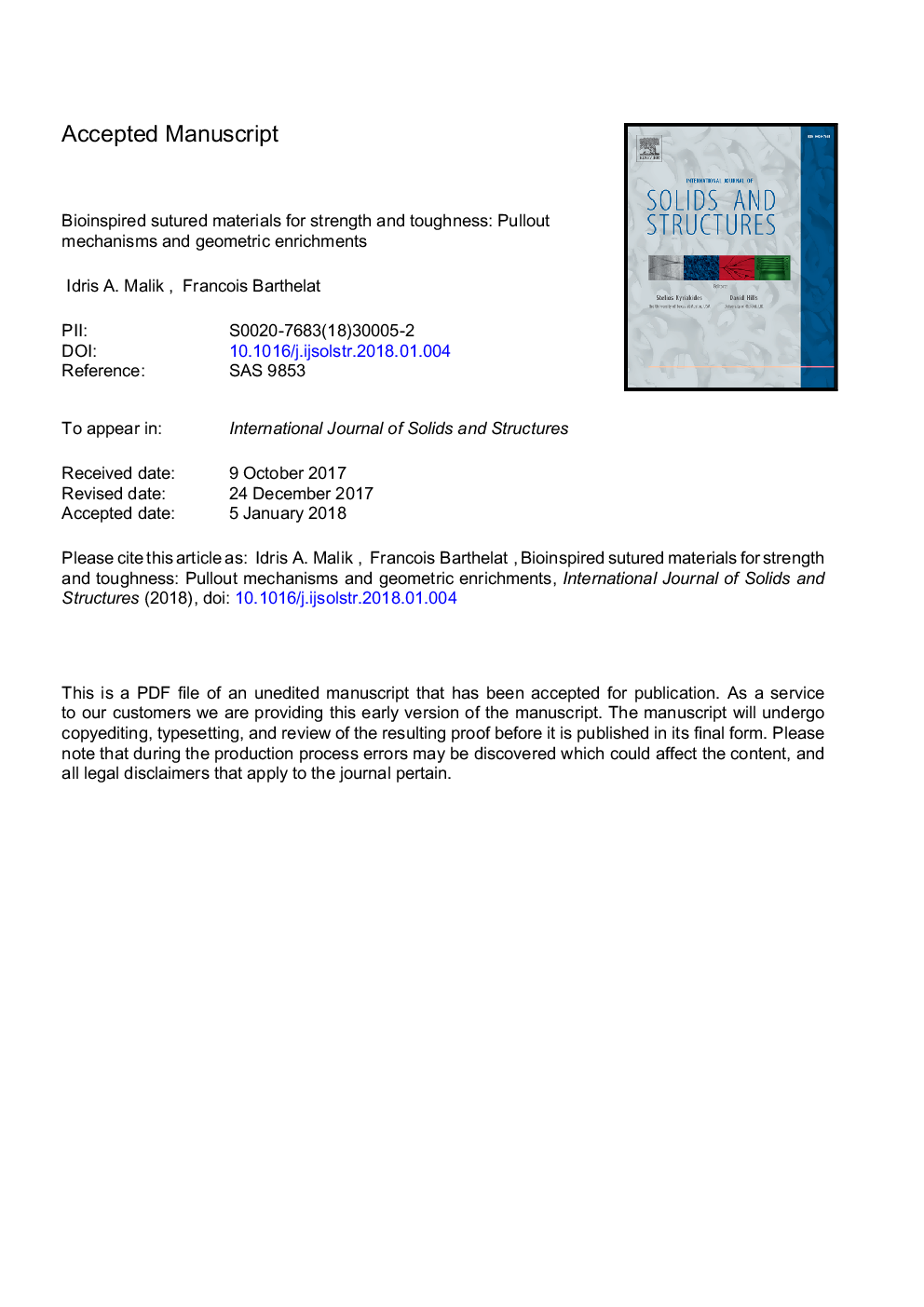| Article ID | Journal | Published Year | Pages | File Type |
|---|---|---|---|---|
| 6748365 | International Journal of Solids and Structures | 2018 | 40 Pages |
Abstract
Hard structural elements in nature are often joined with sutures lines, as seen in human skull, cephalopods or turtle shell. These sutures can arrest cracks, and can provide flexibility for respiration, locomotion or growth. In this paper we introduce a morphometric method to capture the complex shape of sutured interfaces using only a few parameters. The method is simple, and can capture relatively complex suture geometries with re-entrants, interlocking features. The study starts with a simple jigsaw-like model which is enriched with additional features (plateau regions in dovetail-like sutures, multiple locking sites). For each case, closed form and finite elements solutions are developed to capture the full nonlinear pullout response and to predict the maximum stress (and potential fracture) in the solid material. These models were then used to identify the geometries and interface properties (friction) that lead to optimum combinations of strength and energy absorption. Suture designs that reduced frictional stress with low coefficient of friction or with multiple contact points were the most efficient. The results can serve as guidelines to design and optimization of non-adhesive sutures with arbitrary shapes made of arc of circles and lines. We found that the best designs involve low coefficient of friction, which raises an interesting hypothesis on the function of the protein layer in natural sutured lines: This soft layer could act as “lubricant” to prevent the fracture of the solid structures.
Related Topics
Physical Sciences and Engineering
Engineering
Civil and Structural Engineering
Authors
Idris A. Malik, Francois Barthelat,
